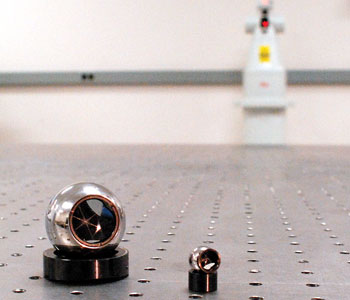Optical Engineering
Spare the Rod: Using Laser Trackers to Build Optical Test Systems
The optical engineer is always on the lookout for new metrology techniques and equipment for optical alignment, particularly in light of the increasing demand for high-performance systems. A recent addition to the alignment toolbox is the laser tracker, a remarkably flexible metrology device.
 Laser tracker targets: spherically mounted retroreflectors
Laser tracker targets: spherically mounted retroreflectors
A laser tracker—which is sometimes referred to as a frameless coordinate measurement machine (CMM)—measures the location of retroreflector targets in a three-dimensional volume. Commonly used for large, precision construction projects such as building aircraft carriers and particle accelerators, laser trackers are proving useful in smaller settings as well. In the basic device, the laser beam from a fringe counting interferometer is pointed in space by a two-axis gimbal system. When the beam is directed onto a target, the reflected beam returns to the tracker, enabling the instrument to “track” the target.
…Log in or become a member to view the full text of this article.
This article may be available for purchase via the search at Optica Publishing Group.
Optica Members get the full text of Optics & Photonics News, plus a variety of other member benefits.
